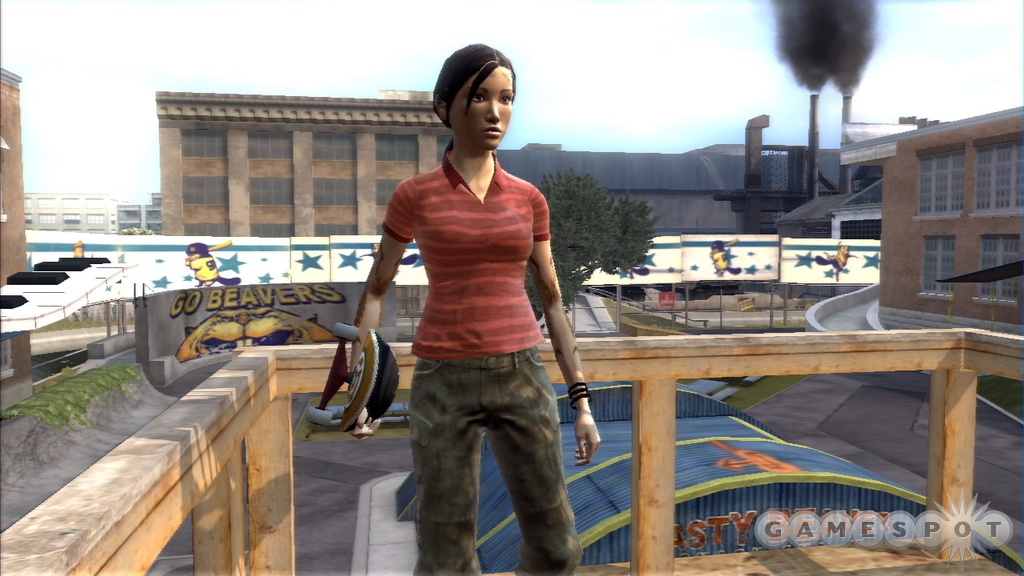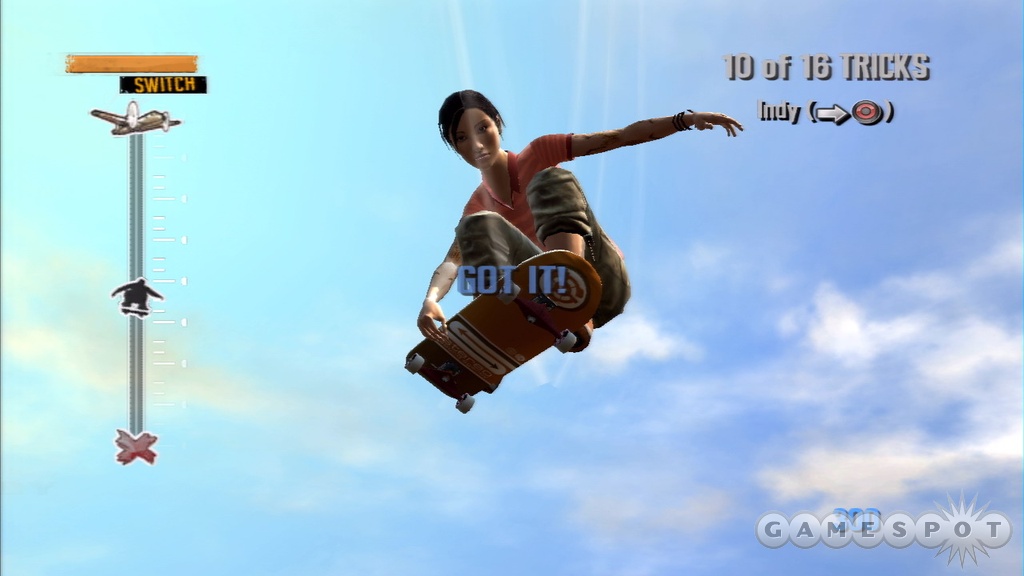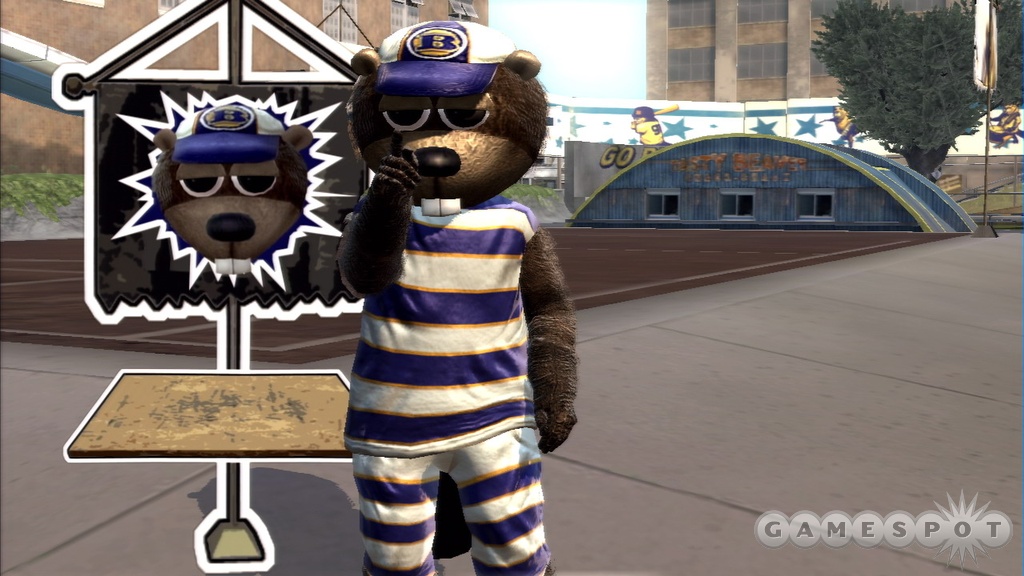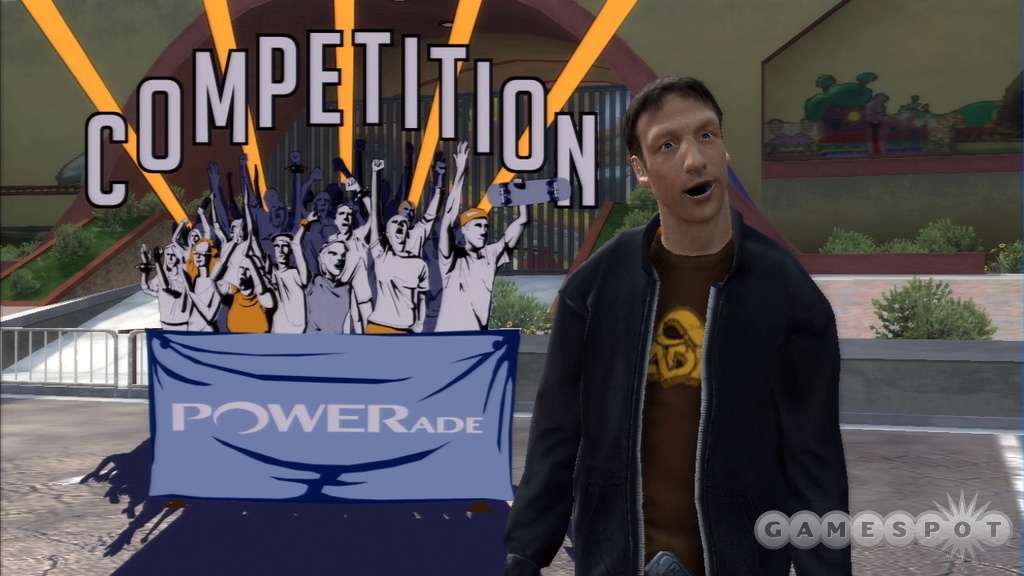Tony Hawk appeared on the Xbox 360 last year, but Tony Hawk's Project 8 marks the first time that the series has been built from the ground up for the current generation of consoles. As you might expect, not being saddled with the constraints of the Xbox and PlayStation 2, Activision and Neversoft have made some strong visual strides this year, updating and modernizing the game's look while replacing a lot of the trick animations that had been in place for years. The gameplay is as freeform and as technical as it's ever been, with some smart changes on that front that are enough to keep fans of the series interested, while a new tutorial is aimed at getting new players up to speed. Unfortunately, some technical glitches and unstable frame rates plague both the Xbox 360 and the PlayStation 3 version of the game.

Those frame-rate problems hit the PlayStation 3 version of the game significantly harder than the Xbox 360. Other than the choppy frame rate and slightly sharper graphics on the PlayStation 3, some of which is only noticeable when using an HDMI cable on a high-end HDTV, the games look roughly the same. But there are other, more significant differences between the two versions. The Xbox 360 version has online support for up to eight players, including a new game mode called walls, which gives your skater a tall trail behind him that behaves sort of like the light cycles in Tron--if you hit another player's wall, you're out. The Xbox 360 version also uses its online support to present a lot of different online leaderboards. Much like Amped 3, many of the different goals in the game have their own individual leaderboard, which adds some competition to the single-player game and gives you a reason to keep on playing the same goals again and again. Without this, the PS3 version feels sort of flat by comparison.
The PlayStation 3 version of the game distinguishes itself by offering complete support for the Sixaxis controller's motion-sensing abilities. You can set it to just control functions like balancing, if you like, or you can move and execute tricks with it, as well. It works, but it lacks the precision offered by the D pad, so it's a neat experiment that's pretty good at showing off what the Sixaxis is capable of, but you probably wouldn't want to play through the game this way. The PlayStation 3 version also installs a 264MB cache file onto the system's hard drive when you first put the game in your system. Presumably, this is done to help speed up loading, but the load times don't seem much better than the Xbox 360 version of the game. If you're in a position where you have to choose between the two versions of the game, the Xbox 360 version offers a more complete package. The Tony Hawk series was a pioneer when it came to being online on the PlayStation 2, and its omission on the PS3 is completely crazy and thoroughly disappointing.
Underneath all those differences lies the same basic game, and it's not that different from what Tony Hawk fans have come to expect from the series, but the changes are noticeable and welcome. The big gameplay change this year is the addition of a new slow-motion trick mode called "nail the trick". You can enter it while in the air by pressing in both analog sticks, which slows the action and moves the camera to your feet and your skateboard. At this point, the two analog sticks (or the Sixaxis' tilt sensors, if you're so inclined) control your feet, letting you flip the board around in a variety of ways. It's very strict on its timing, making it difficult to use at first. But as you get better and better at it, you'll find that it's a handy way to rack up some points when worked into your trick combos. The scoring system has been reworked a bit, so it's a little more difficult to post up ridiculous combos and multipliers by abusing a ton of lip, grind, or manual branches. Considering that score inflation in the online mode over the years has made the system difficult for anyone other than the hardest of the hardcore Tony Hawk players to enjoy, bringing the scores back down to earth is a good idea.
The game has a good career mode that doesn't bog itself down with too much story. Tony Hawk is starting up something called Project 8, and he wants to find the eight best skaters in town. You start out ranked 200th, and everything you do is focused on increasing that rank. The primary way to move through the game is to complete goals, but the goal system has been thoroughly reworked this year. Rather than setting you up with a very clear critical path that takes you to the top, the game is a bit more open ended. You'll immediately find all sorts of goals, and as you complete goals that open up new parts of town, you'll uncover even more challenges. Also, the game doesn't ask you to set your difficulty at the beginning of the game. Instead, many of the game's goals offer three different levels of completion. You can get by if you can complete the amateur-level goal, but there are also pro and sick levels to achieve. As it should be, the intermediate Tony Hawk player should be able to accomplish the pro-level goals more often than not, and some of the sick level goals are, indeed, sick.

There are a lot of different goals in the game--in fact, there are plenty of times when your compass gets so cluttered with goal arrows that you're not quite sure what you should do next. Probably the most interesting new goals are the chalk challenges. Grind versions of the chalk challenge have you skate a specific grind line in an attempt to reach the next chalk marking. The first line you reach is for the amateur goal, the second for pro, and the third for sick. There are also chalk challenges for being able to reach a certain height while launching off of a quarter pipe, natas spinning or stalling on specific objects, wall planting or wall riding up to varying heights, and so on. Since your skater improves over the course of the game, you might not be able to reach the sick levels for these goals right away, giving you a reason to come back later after you've raised your stats.
You'll perform at skate demos several times over the course of the game, and these work by splitting the crowd watching the action into three zones. You need to constantly do tricks in each zone to keep each section of the audience happy. You'll also meet up with pro skaters and then take on specific challenges to show them you're legit. These challenges are often unique. Bob Burnquist's pro challenge asks you to jump out of a plane and perform tricks in the air. Bam Margera, once again, can't stay out of the garbage, and he'll demand that you launch yourself off of a building and land in a dumpster. Ryan Scheckler focuses on gaps and acid drops, Daewon Song has you move pieces around a small area to set up a lengthy grind line, and there are five more challenges to play through over the course of the game, not counting Tony Hawk's grand finale, which is different depending on how many goals you complete at the higher levels. All in all, people that have stuck with the series over the years should be able to blaze through the game's goals and get the amateur ending after about six or seven hours. But moving up to the pro and sick finales will most definitely take some time. The career is helped along by several appearances by a virtual Jason Lee (Mallrats, Enemy of the State, Stealing Harvard), who guides you by informing you of new skate demos, pro challenges, and other more important goals. All in all, it's a fun, streamlined mode that focuses on the gameplay without spending too much time with needless story sequences.
The level design is similar to American Wasteland, in that Project 8 presents the world as one large city with different sections. However, this game makes good on the "seamless world, no loading" concept that American Wasteland touted. Where American Wasteland just hid the loading by forcing you to skate between areas in tight, non-descript tunnels, Project 8's world is truly seamless. The only time you'll see loading screens while playing is if you retry a goal that's halfway across the city, forcing the game to pause for a bit while it warps you there. The large city is nicely designed and has plenty of opportunities for ridiculously long combo lines. The size of the city becomes a problem online, where you might play a full game without ever seeing another player. To combat that, you can choose to limit players to one part of town or a few areas that combine multiple parts of town into one area. The online mode in Project 8 on the Xbox 360 is much the same as it has been over the years. You can connect to a game with up to eight players and just skate around. The host then chooses to start a game and things go from there. In addition to the new walls game type, old modes like trick attack, score challenge, combo mambo, graffiti, and horse are also available. The online action is a lot of fun, and in a surprising twist, you can still use the slow-motion nail the trick mode during online games.

Like in many of the sports games that have transitioned from the previous generation of consoles to this one, in Project 8 there are a lot of features and options that haven't carried over from American Wasteland or the previous games in the series. While you can still create your own skater, your options for hairstyles, faces, eyes, and so on are way more limited. However, the number of licensed shoes in the game has skyrocketed, presumably because the nail the trick mode gives you a detailed look at your feet. The level-creation tools show up in a limited form during the career, but there's no option to make your own skate park or goals. Those options were nice to have in the previous installments in the series, but Project 8 doesn't feel like it's missing a large chunk of content or anything like that.
If it wasn't for its frame rate problems, Project 8 would be a great-looking game. Most of the animation that's been used and reused in Tony Hawk games is gone, replaced by all new motion-captured tricks and rag-doll physics. Yes, that's right, the legs-straight-out benihana animation you've come to know and love over the years is history. But shed a silent tear for it, because the game's animation does look really nice. The environments are bright and colorful, and even the gross-looking pedestrians that have given you goals in the previous games have been replaced by nice-looking close-up shots. The game runs at a good speed, but unfortunately the frame rate just can't keep up. The PlayStation 3 version of the game is more unstable and sinks to lower depths than its Xbox 360 counterpart. On the 360, it's just enough to get in the way of the gameplay. On the PS3, it's enough to make the game feel unfinished, but only on the occasions when it really starts dropping frames. Both versions also contain a cool pro tricks section that lets you view the skater models doing tricks as they were motion captured. You can move the camera around, focus on the board, roll the sequence in slow motion, and see just what level of fancy footwork goes into doing actual skate tricks. It reinforces the concept that actual skating is, at the pro level anyway, insanely difficult.
The soundtrack in Project 8 is your typical mix of multigenre licensed music. By default, it's low enough to serve as background music that doesn't get in the way of the action. There's a bit of voice work in the game from the pro skaters, but since they only turn up during very specific challenges, most of them only have a few lines. Considering their wooden delivery, maybe that's for the best. Tony Hawk gets a bit more mic time, but even he seems like a bit player in the game. Instead, it's Jason Lee who does most of the talking. In addition to being a former pro skater and running his own skate company, the guy's an actor, and he manages to deliver his lines quite a bit better than the skaters do. There are a lot of new sound effects in Project 8 that really enhance the experience. The grind noises in Tony Hawk have always been great and realistic, but they've been mostly the same for the last several years. There are a lot of new skating-on-surfaces effects this year that really enhance the sound of the game.

Like every other release on Microsoft's platform, the Xbox 360 version of Tony Hawk's Project 8 has a series of achievements that you earn by completing specific tasks. The achievements are designed much better here than they were in American Wasteland, with a handful of points coming for just progressing through the story mode, while many, many more come from mastering it. There are also points for reaching specific scores and combos in the high score mode, playing and winning online, and more. The game also has an achievement for beating a developer or beating someone who has beaten a developer in an online game. It'll be interesting to see how this viral achievement works its way from player to player.
Project 8's tutorial should help new players get into the swing of things, but ultimately it's fans of previous installments that will get the most out of this game. The redesigned career mode and multiple difficulty goals inject a lot of excitement into the formula, and features like online leaderboards and Xbox Live support really make the Xbox 360 version stand out. If you've ever been a fan of the Tony Hawk series, this game is worth your time.